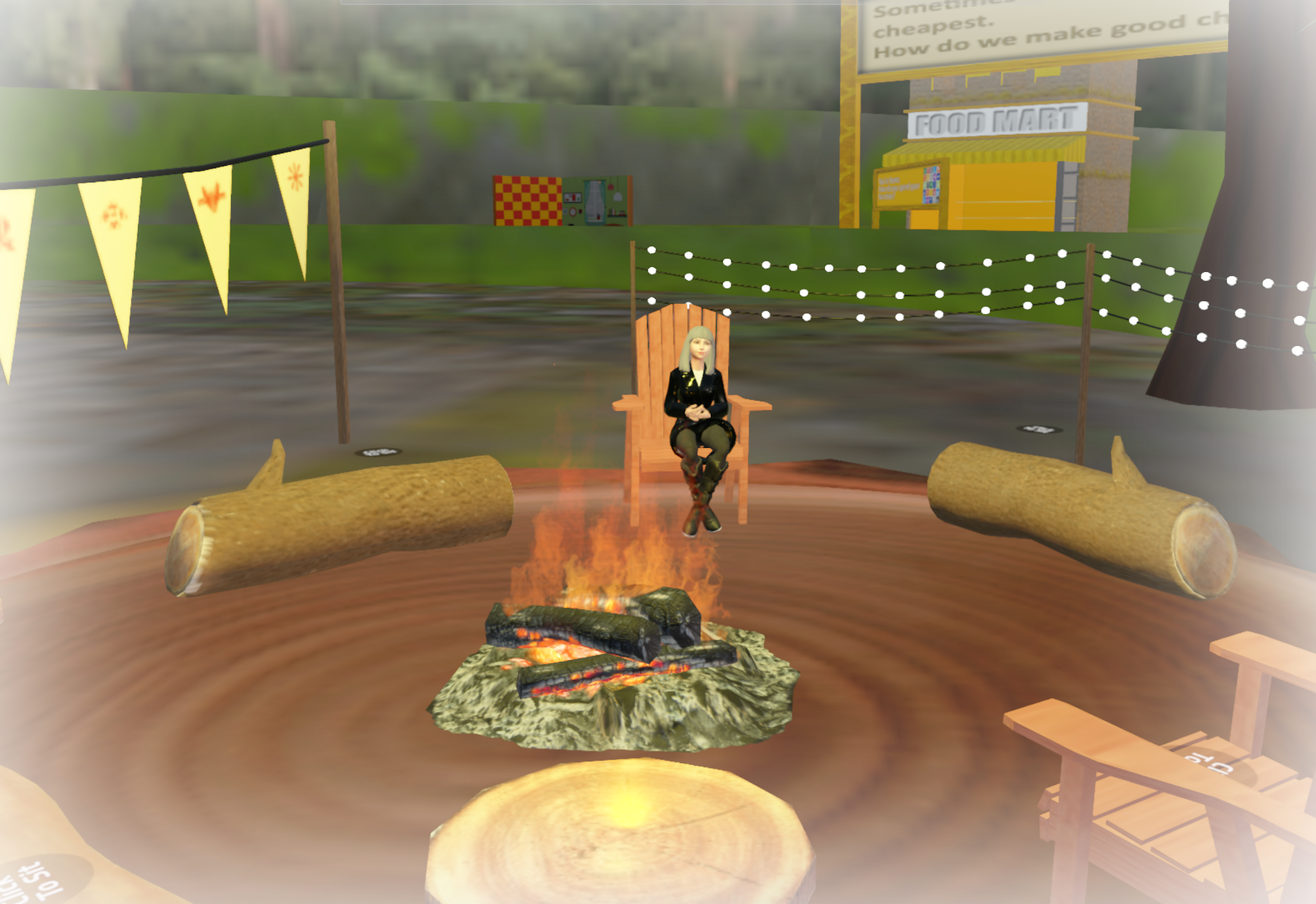First things first: I am not an expert on virtual worlds. I have been in this space when it was 2D, starting in 2006, and when the Head-Mounted Displays came along in 2014. I have tried many virtual worlds, but now seems to be the tipping point for VR as the word metaverse seems to have entered the public lexicon.
So, here we are at the cusp of what, I think, will be a world-changing/ perspective-changing time. Those of us who have read Snow Crash and Neuromancer and dream of a giant virtual world may believe that it’s almost here, but I am not so sure. My own personal guess is that the metaverse may belong eventually to several large companies, probably Epic Games (yes, games), Meta (Horizon), and whatever Apple decides (probably a kit bash of VR and AR).
Why do I want to make a case for Open Source? I don’t trust Meta. Zuckerberg wants your data, and he already has it, but he wants more. He wants to throw ads at you in the metaverse, and inundate whatever landscapes you build with BUY, BUY, BUY. (Remember, this is an opinion piece).
Epic? They will have the young people, and that’s the choice market, no? Many people do not realize that games and gaming are a bigger entertainment market than television and movies. Thus, the logical metaverse morphs out of the young people playing Roblox, Fortnite, and creating games in Core. Everything you want and need is in Epic Games, and their Unreal Engine is gorgeous.

This leads me to the teeny tiny worlds that are being created by avid coders and content creators that are not connected to any big corporation.
History
Once upon a time there was a visionary named Philip Rosedale. I have been told that Second Life, his first “metaverse” was built with the inspiration to recreate Burning Man virtually. Once he left Linden Lab as CEO, he began to develop a metaverse for the new virtual reality headsets, named High Fidelity. The beauty of HiFI was that it was Open Source, meaning anyone with the skills could build it and develop it however they wanted. Want to be able to see who is online in the worlds? You can use JavaScript and build an app for that in the world. It was decentralized and different from anything else around. Even the money system was built by High Fidelity on the blockchain—way before cryptocurrency was the craze it is today. Sadly, the project folded about a year and a half ago I won’t go into why now, but because the code was open source a few hardy souls created forks and kept it going.
Pros and Cons of Open Source
I spend a lot of time in Sansar, and I love it. It’s a social virtual world that really looks pretty and has a solid underpinning. In fact, it was created by the team from Linden Lab who created Second Life. If anything happened to Sansar, I would lose all my worlds along with the ability to log into Sansar.
In an Open World, everything I create is hosted by me (I have an Amazon S3 storage that is pennies a month) and runs on a server that I “rent” from Digital Ocean for ten dollars a month. That, to me, is quite inexpensive, and if I had the skill I could host a server at home for the cost of electricity.
The point of all this, is that the big companies will run slick and pretty worlds, but Open Source will always remain a viable way to provide the metaverse.
Open Source Open Worlds
For years I have had an idea for a virtual reality intervention (non-profit) for the seriously and persistently mentally ill. I want to collaborate with them on the learning of living skills. I demonstrated my interactive build to my large health care system’s small psychiatric hospital, and people were perplexed. It was too soon. However, now seems to be the time, so I looked around for a place to rebuild.
I reviewed several worlds, aided by Ryan Schultz’s wonderful compendium of social VR worlds.
I ran through a number of them, started learning Unity and Unreal Engine, and finally ended up back in Vircadia—open source VR. There are a number of drawbacks to this. For one, I must rent a server and cloud storage, which is not expensive, but is an expense.
The biggest drawback is that my plan was to make inexpensive Oculus Quest2 headsets available so that people could join me on the metaverse easily. Vircadia, with a tiny but dedicated development team, is not Quest2 ready. Oh well. At least it works on desktop.
Thus, I stay in Sanar because while it “owns” my worlds, it also provides an inexpensive platform for development that is supported by some amazing graphics and performance. The future of Sansar is unknown, but I am along for the ride.
I have learned that persistence is more useful than any other skill or intelligence.
Still a worthy dream. Good blog. I agree about the need to be open source. Probably the biggest reason is the cost associated with developing it. Do you know any besides Vircadia that is saying they are open source and have an active dev community? myMO will be open source but it is far from a metaverse. It is just a multiplayer game.